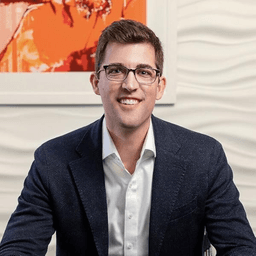How Brett Helling Scaled to 1.5M Monthly Visitors with Website Acquisitions


Business Description
Table of Contents
Navigate through the case study sections
Executive Summary
Case Study Content
Turning Failures into Foundational Experience
Brett Helling started by launching ten websites that flopped. He was in college and spent nights tinkering with themes, learning how search engines index pages and how small design tweaks can change bounce rates. Each failed project chipped away at his ego but sharpened his understanding of SEO basics. He also drove for rideshare companies and saw that limited information existed for drivers who wanted inside tips. That gap sparked a simple blog that became the foundation of his future.
Spotting the Opportunity on Flippa
After a $10,000 scam and several underperforming flips, Brett browsed Flippa’s classifieds and discovered Ridester, a rideshare platform domain with high-authority backlinks from Forbes and other outlets. He paid the founder, merged his personal rideshare blog into the Ridester domain, and refocused the site on advice, reviews, and earnings strategies. That pivot was the turning point.
Scaling to 1.5M Visitors
Within three years, Ridester climbed to 1.5 million unique visitors per month. Brett optimized underperforming posts, cleaned up the link profile, and produced deep-dive content on driver earnings, tax deductions, and app comparisons. Short tutorials, interviews with high-earning drivers, and data-driven posts helped the site rank for competitive terms. He relied on ad networks at first, then tested lead generation and service offers to boost revenue without degrading user experience.
Building a Team and Navigating HCU
By 2019, Brett assembled a manager for each site in his portfolio. Then COVID lockdowns arrived, traffic dipped, and hiring paused. Sites rebounded in late 2022 until Google’s September 2023 Helpful Content Update hit. Traffic and ad revenue plunged. He let the team go, retained core contractors, and spent nearly a year rebuilding content pillars and removing low-value pages to align with new search guidelines.
Revenue Diversification and Future Outlook
Having learned the hard way about algorithm risk, Brett now mixes ad networks with lead gen, services, and partnerships to diversify income. He still acquires stressed assets priced between $10K–$50K, looks for clean white-hat link profiles, and focuses on founders’ passion projects. His lean approach and willingness to do the work solo have allowed him to bounce back and keep a lifestyle business that stays somewhat passive once built.
Key Takeaways
- 1Brett turned early failures into a learning lab, building ten hobby sites before finding success.
- 2He acquired Ridester on Flippa, merging a personal blog into a platform that reached 1.5M monthly visitors in 3 years.
- 3By targeting underperforming sites with clean link profiles and founder passion, he minimized link building and maximized growth.
- 4Pivoting after Google’s Helpful Content Update, Brett rebuilt content pillars and diversified into lead gen and services.
- 5He bootstrapped growth, avoided investor pressure, and used cash flow to reinvest in about 20 acquisitions.
- 6Maintaining a lean team and focusing on passion projects has been key to weathering algorithm shifts and market downturns.
Key Facts
Tools & Technologies Used
Premium Content Locked
Subscribe to access the tools and technologies used in this case study.
Unlock NowHow to Replicate This Success
Premium Content Locked
Subscribe to access the step-by-step replication guide for this case study.
Unlock NowInterested in Being Featured?
Share your success story with our community of entrepreneurs.
Explore More Case Studies
Discover other inspiring business success stories

How a Taiwanese Math Tutor Made $270k Teaching on Pornhub
When traditional tutoring failed, Taiwan’s Chang Hsu faced mounting debt. In a bold move, he posted his calculus lessons...
Chang Hsu Math Tutoring

How VisualizeAI Earned $30K in 3 Months with a 5-Day MVP
VisualizeAI was created to streamline design workflows for architects and interior designers. Built in five days by Vats...
VisualizeAI

From £0 to £5M: How Nature Spell’s Rosemary Hair Oil Dominated TikTok Shop
Nature Spell leveraged TikTok Shop and an aggressive affiliate commission model to turn its Rosemary Hair Oil into a £5 ...
Nature Spell